Rise of Wearable AI Technology: Transforming Industries in 2025

By Darshak Doshi
September 17, 2025
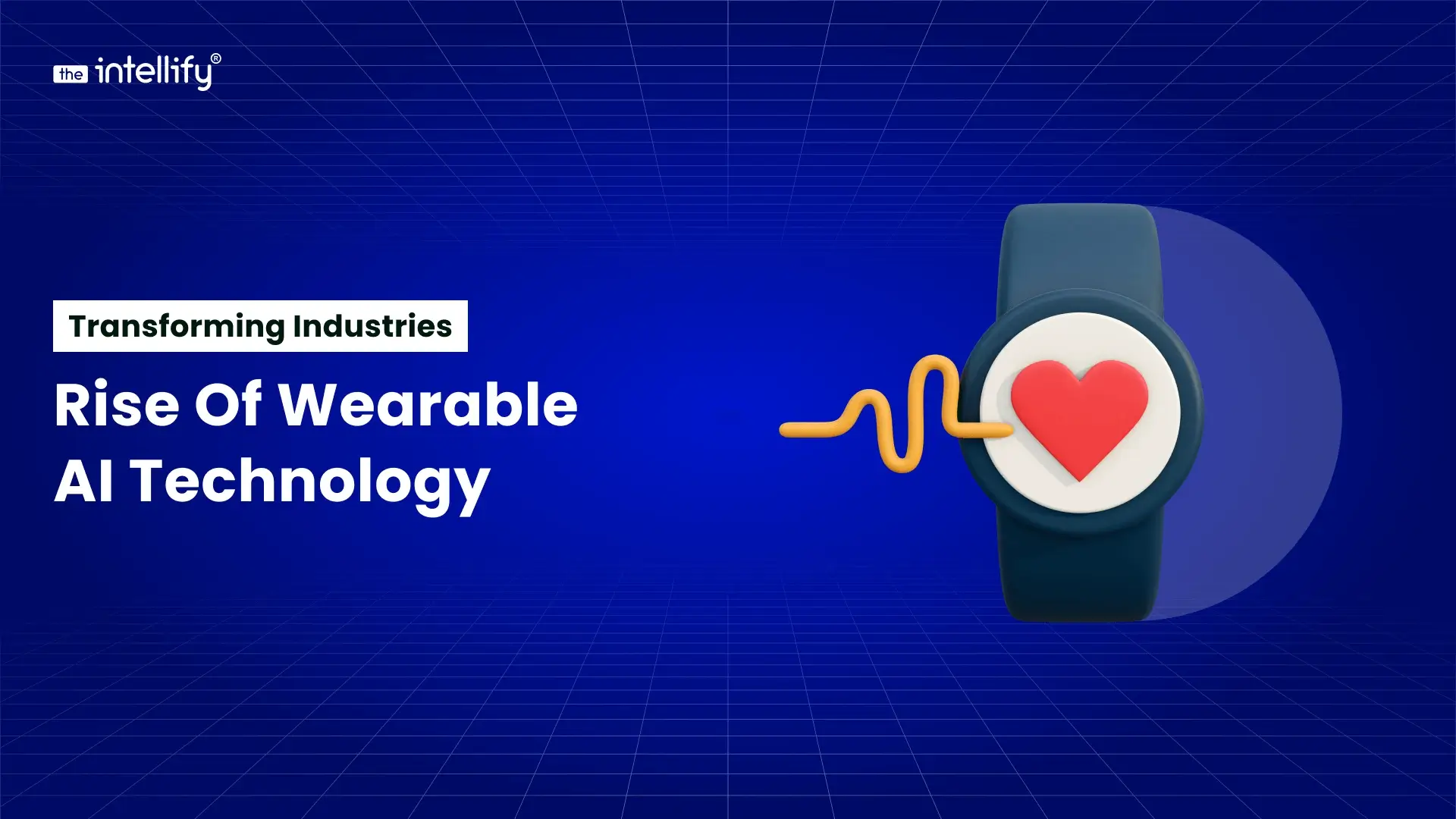
Summary
Wearable AI technology is transforming how industries work, blending smart devices with artificial intelligence to improve health, retail, fitness, manufacturing, and more. This blog shares insights into its growth, real-world applications, challenges, and the future potential of AI-powered wearables.
The line between humans and technology is getting thinner every day, and nowhere is this more visible than in wearable AI technology. From fitness trackers that monitor heart rate to smart helmets used in factories, AI wearable devices are no longer just futuristic gadgets, they are business-critical tools.
Industries such as healthcare, manufacturing, retail, sports, and education are actively adopting AI-powered wearables to improve productivity, safety, and customer experience. According to industry forecasts, the wearable AI market is set to grow exponentially in the coming years, driven by innovation in sensors, edge computing, and machine learning models.
In this article, I’ll walk you through how wearable AI evolved, key device types, real industry use cases, technical basics, business benefits, adoption challenges, and practical steps to launch a wearable AI project.
The Evolution of Wearable Technology
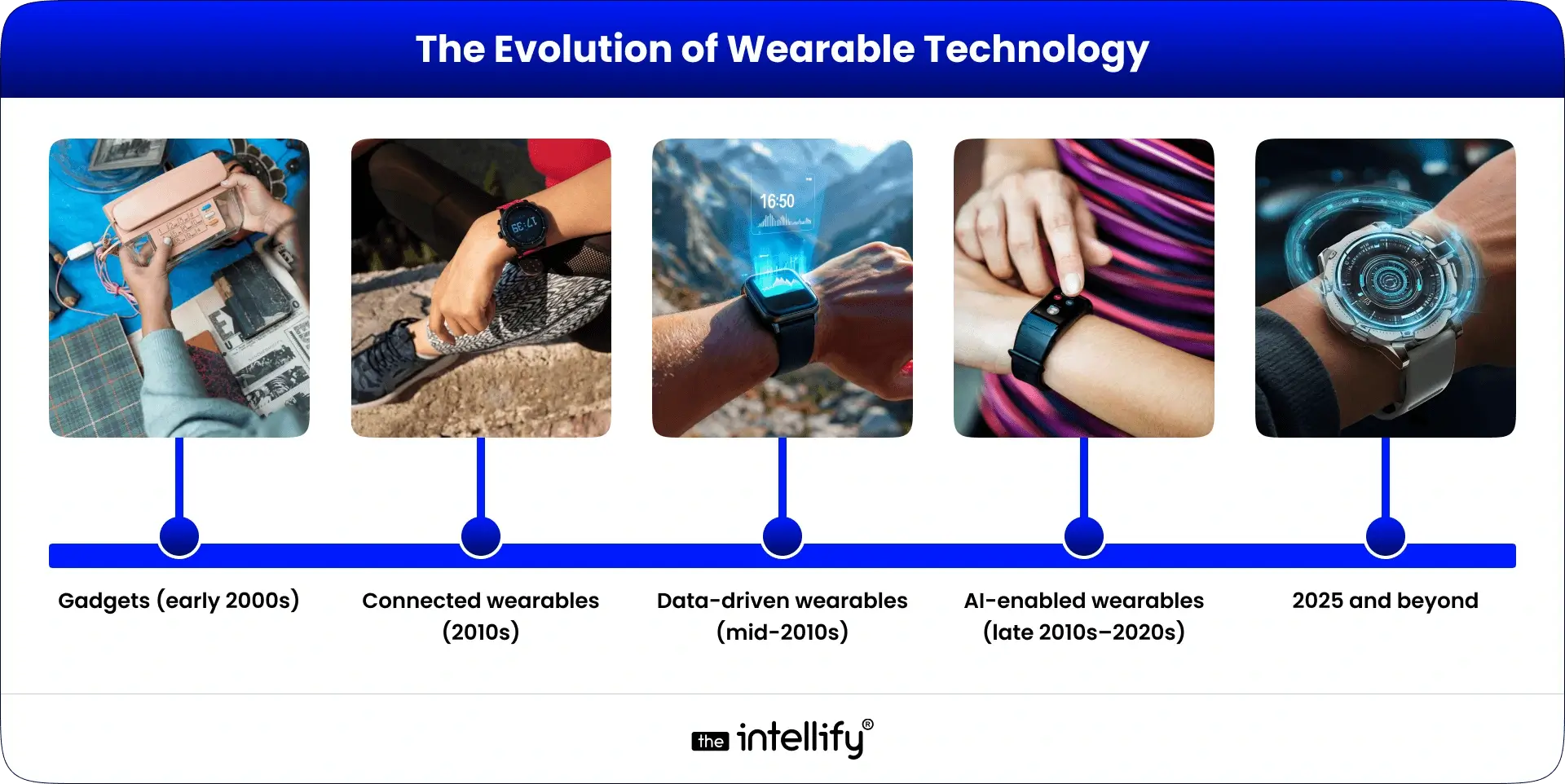
Wearables have come a long way from being simple step counters or digital watches.
- Gadgets (early 2000s): pedometers, early fitness bands, and basic Bluetooth headsets.
- Connected wearables (2010s): smartwatches and connected fitness trackers that synced with phones.
- Data-driven wearables (mid-2010s): devices captured richer biometric and motion data, enabling dashboards and reports.
- AI-enabled wearables (late 2010s–2020s): on-device and cloud AI turned raw data into predictions, alerts, and personalized advice.
- 2025 and beyond: AI wearables are evolving into intelligent companions, capable of not only collecting data but also making decisions, guiding users, and integrating seamlessly with other digital ecosystems.
This evolution shows that wearables are no longer passive devices, they’re now proactive assistants.
Global Wearable AI Market Overview
The wearable AI segment is growing rapidly because devices are cheaper, sensors are better, and AI models run efficiently on small processors (edge AI). Demand is strongest where real-time insights drive value: healthcare, manufacturing safety, logistics, sports performance, and retail.
- According to market research, the global wearable AI market was valued at $20+ billion in 2023 and is expected to cross $100 billion by 2030, growing at a CAGR of over 25%.
- North America and Europe are early adopters, but Asia-Pacific is seeing rapid growth due to healthcare and manufacturing adoption.
Key market drivers:
- Rising focus on worker safety and compliance.
- Healthcare’s need for remote monitoring and early detection.
- Sports and fitness seeking performance gains and injury prevention.
- Retail and field services using wearables for faster task completion and better customer service.
Key Examples of Wearable AI Devices
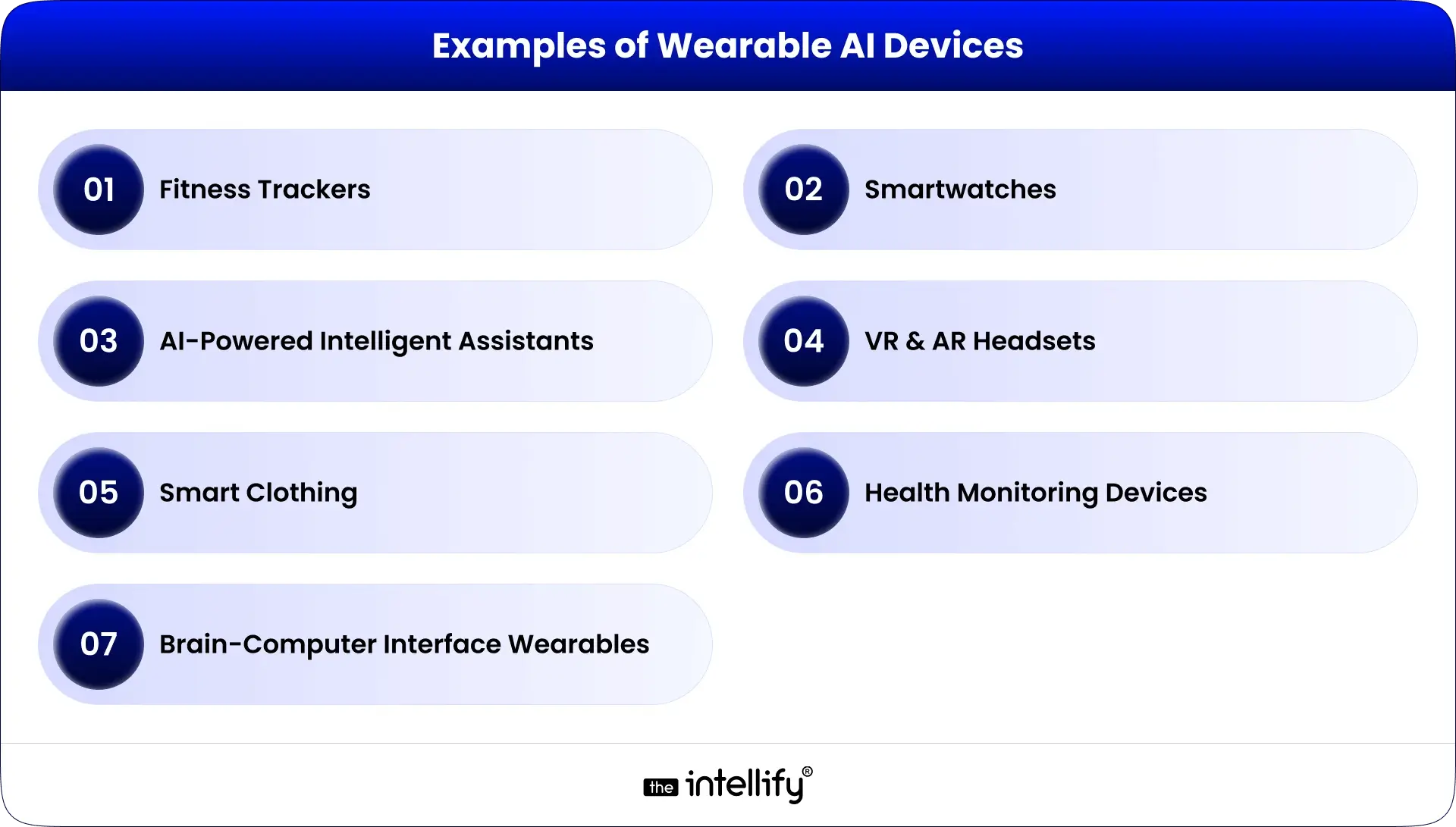
1. Fitness Trackers
Devices like Fitbit and Xiaomi Mi Band track steps, calories, sleep patterns, and more. AI enhances these devices by predicting workout effectiveness and offering personalized recommendations.
2. Smartwatches
Smartwatches such as Apple Watch and Samsung Galaxy Watch combine health monitoring, AI-driven assistants, and productivity tools into one compact device.
3. AI-Powered Intelligent Assistants
Wearables like Amazon Echo Frames or AI-enabled earbuds allow users to access personal assistants hands-free, improving efficiency in workplaces.
4. VR & AR Headsets
Devices such as Meta Quest and Microsoft HoloLens use AI to create immersive experiences for training, design, and entertainment.
5. Smart Clothing
AI-enabled clothing can monitor posture, body temperature, and movement. For example, Hexoskin smart shirts track biometric data in real time.
6. Health Monitoring Devices
Wearable ECG monitors, glucose sensors, and blood pressure trackers use AI for predictive health analysis and early detection of diseases.
7. Brain-Computer Interface Wearables (emerging trend)
Companies like Neuralink are experimenting with AI-powered brain interfaces that allow humans to control devices using thoughts.
Applications of Wearable AI across Industries
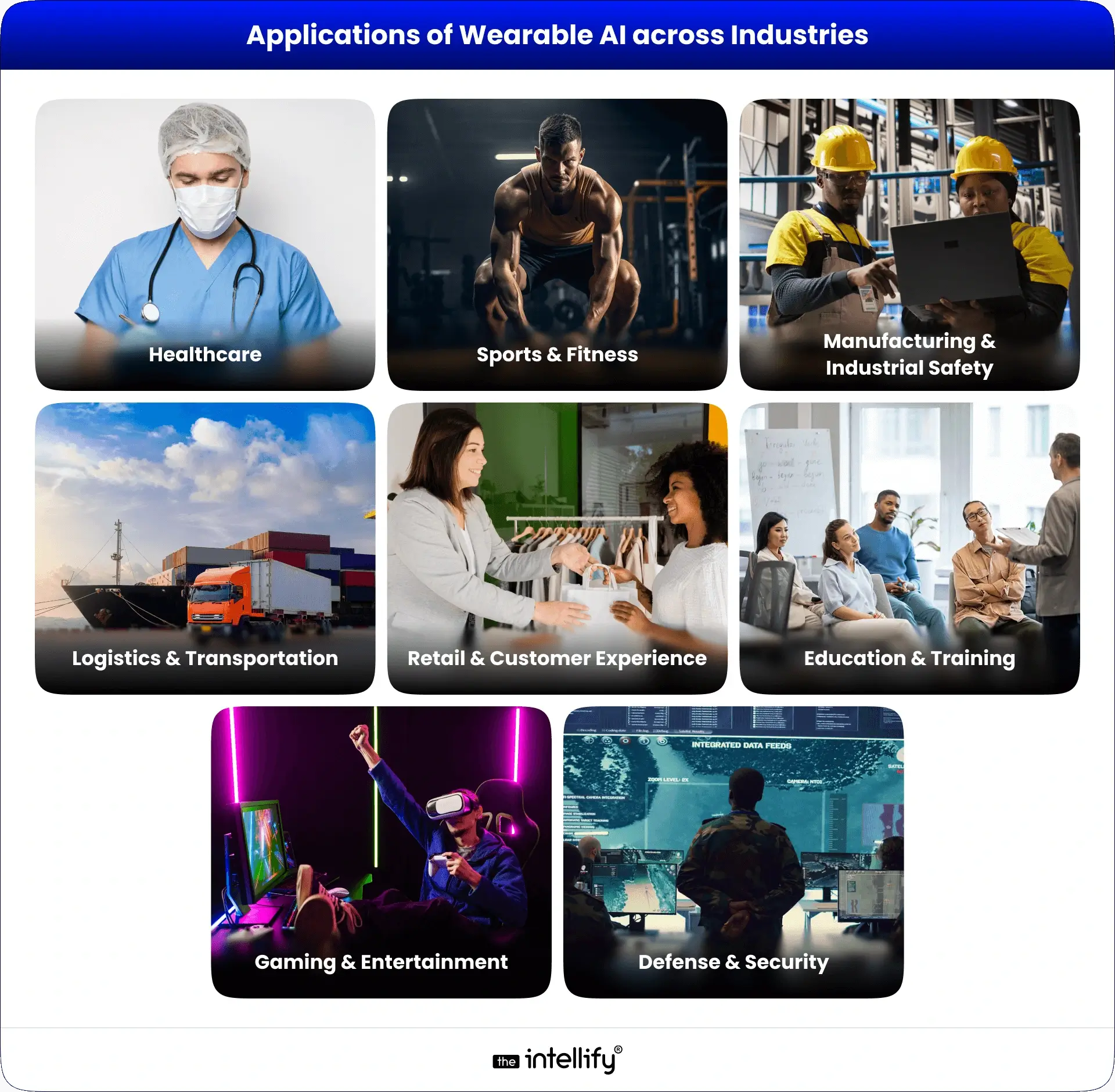
Healthcare
- Remote patient monitoring: chronic patients send continuous vitals; AI flags concerning trends.
- Post-operative care: wearable sensors detect infection or deterioration earlier than periodic checkups.
- Elderly care: fall detection and wandering alerts help caregivers respond quickly.
- Clinical trials: continuous data enables better outcomes measurement and faster studies.
Sports & Fitness
- Injury prevention: models monitor workload and flag overuse patterns.
- Performance optimization: personalized training plans based on biometric response.
- Rehabilitation: wearables guide correct movement patterns and measure progress.
Manufacturing & Industrial Safety
- Fatigue detection: wearables measure micro-sleeps and alert supervisors or trigger machine slow-downs.
- Hazard alerts: combine location and environmental sensors to warn about toxic exposure or heat stress.
- Hands-free instructions: AR glasses deliver step-by-step guidance to technicians.
Logistics & Transportation
- Driver monitoring: eyelid tracking and posture sensors detect drowsiness.
- Pick-and-pack optimization: smart glasses display the next item to pick, increasing speed and accuracy.
Retail & Customer Experience
- Sales assistance: staff using AR glasses access product information instantly.
- Personalized offers: wearables can inform loyalty systems (with consent) to deliver tailored discounts.
Education & Training
- Immersive learning: VR headsets make complex skills safer to practice.
- Skill assessment: wearables measure competency objectively during simulations.
Gaming & Entertainment
- Immersion & haptics: wearables create realistic feedback and presence in games and virtual concerts.
Defense & Security
- Soldier health monitoring: real-time vitals help medics prioritize care.
- Situational awareness: AR helmets provide tactical overlays and navigation.
How AI Wearables Work
Wearable AI systems usually follow this simple chain:
- Sensors collect data (heart rate, motion, temperature, location).
- Edge processing performs quick checks locally to save bandwidth and battery – e.g., detect a fall instantly.
- Connectivity (Wi-Fi, cellular, BLE, 5G) sends summarized or raw data to cloud systems when needed.
- Cloud AI runs heavier models for trend analysis, risk scoring, and personalization.
- Action layer notifies users, triggers alerts, or integrates with enterprise systems (EHRs, ERP, MES).
- Feedback loop improves models as more labeled data becomes available.
This seamless flow makes wearable AI devices both smart and adaptive.
Real-World Use Cases of Wearable AI Technology
- Apple Watch detecting irregular heartbeats has saved lives by alerting users before critical incidents.
- Cardiac monitoring: Smartwatches have detected atrial fibrillation in users and helped save lives by prompting clinical follow-up.
- Boeing uses AR headsets for technicians, reducing airplane assembly errors by nearly 40%.
- UPS employs AI wearables for logistics staff to optimize routes and monitor worker safety.
- Professional sports teams use wearable trackers to predict injuries and design personalized training programs.
From Apple Watch apps to smart clothing and AR/VR devices, the potential of wearable AI is limitless. Want to explore how this fits into your business model? Let The Intellify guide you

Early Adopters & Leading Players in Wearable AI
Several industries and companies are already ahead in embracing wearable AI:
- Healthcare & Fitness: Apple (Apple Watch), Fitbit, and WHOOP are leaders in health monitoring.
- Enterprise & Manufacturing: Microsoft (HoloLens), RealWear, and Honeywell are driving adoption in training and safety.
- Sports & Lifestyle: Nike, Adidas, and Garmin are making performance-focused wearables mainstream.
- Tech Giants: Google, Samsung, and Meta continue to invest in wearable ecosystems.
These early adopters are setting the stage for broader use across industries.
AI Integration into Wearables
AI in wearables is enabled by:
- Edge AI frameworks for on-device inference (tinyML approaches).
- Secure connectivity (mutual authentication, encrypted tunnels).
- Interoperability standards (FHIR for health, OPC-UA for industry, etc.).
- Model lifecycle tools for updating models securely after deployment.
- Privacy-by-design: anonymize and minimize data collection.
For example, AI in smart helmets not only monitors worker fatigue but also predicts accidents before they happen.
Future of Wearable AI Technology
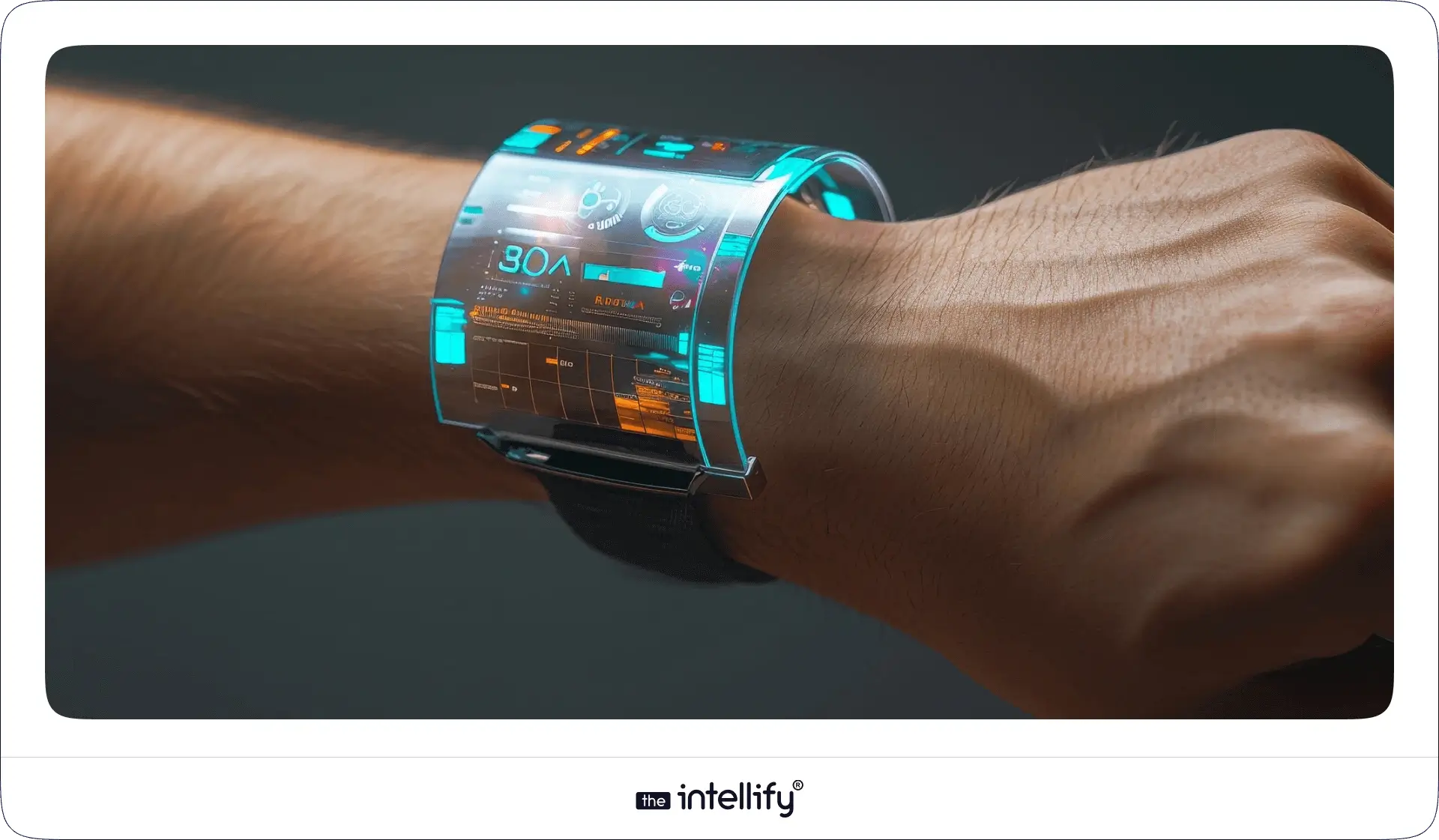
The future of wearable AI points toward smaller, smarter, and more connected devices. Expect to see:
- Medical-grade wearables for early disease detection.
- AI-powered AR/VR tools for immersive enterprise training.
- Brain-computer interfaces pushing human-machine interaction forward.
- Longer battery life and eco-friendly designs.
- Seamless integration with IoT and enterprise platforms.
In the next decade, wearable AI will shift from being a support tool to becoming a core enabler of safety, productivity, and personalized experiences across industries.
How to Choose the Right Wearable App Development Company?
If your business wants to invest in wearable AI, choosing the right wearable app development company is important. Here’s what to look for:
1. Industry Experience – Ensure they have built AI-based wearables before.
2. Technical Expertise – Look for knowledge in AI, IoT, and wearable hardware.
3. Custom Solutions – The company should offer tailored apps for your business needs.
4. Security Standards – They must follow global data security guidelines.
5. Scalability & Support – Choose a partner who can scale your solution as technology evolves.
In Conclusion
The rise of wearable AI technology is more than just a tech trend, it is a transformative force shaping industries across the globe. From healthcare and sports to manufacturing and retail, AI-powered wearables are driving efficiency, safety, and personalization.
While challenges around privacy, cost, and adoption remain, the future of wearable AI is bright. Businesses that adopt early will gain a competitive edge, positioning themselves as innovators in a fast-changing world.
Frequently Asked Questions (FAQs)
Q1. What is wearable AI technology?
Wearable AI technology combines smart devices like watches, trackers, and AR/VR headsets with artificial intelligence. These devices don’t just collect data but analyze it in real time, offering insights for health, safety, and productivity.
Q2. How can wearable AI help my business?
Wearable AI improves efficiency, safety, and customer engagement. In healthcare it enables remote monitoring, in retail it powers AR shopping, and in manufacturing it supports worker safety. The Intellify helps businesses design and scale tailored wearable AI solutions.
Q3. Are wearable AI devices reliable for health monitoring?
Yes, many are accurate for preventive care and early alerts. Devices like the Apple Watch can detect irregular heart rhythms and provide useful health insights. While not a medical replacement, they add strong value for users and healthcare providers.
Q4. How big is the wearable AI market and is it growing?
The wearable AI market is growing rapidly with double-digit annual growth. Demand is highest in healthcare, fitness, manufacturing, and retail, making it a major opportunity for businesses looking to innovate.
Q5. What are the main privacy and security concerns?
Wearables collect sensitive personal data, so security and compliance are crucial. Risks include data misuse and breaches. Strong encryption, transparent policies, and expert partners like The Intellify ensure safe and secure wearable AI solutions.
Q6. How do I choose the right wearable app development company?
Pick a partner with proven AI expertise, security practices, and industry experience. Look for clear pilots and scalability options. The Intellify offers end-to-end wearable AI development to help businesses adopt technology with confidence.

Written By, Darshak Doshi
With over a decade of experience, Darshak is a technopreneur specializing in cloud-based applications and product development in healthcare, insurance, and manufacturing. He excels in AWS Cloud, backend development, and immersive technologies like AR/VR to drive innovation and efficiency. Darshak has also explored AI/ML in insurance and healthcare, pushing the boundaries of technology to solve complex problems. His user-focused, results-driven approach ensures he builds scalable cloud solutions, cutting-edge AR/VR experiences, and AI-driven insights that meet today’s demands while anticipating future needs.
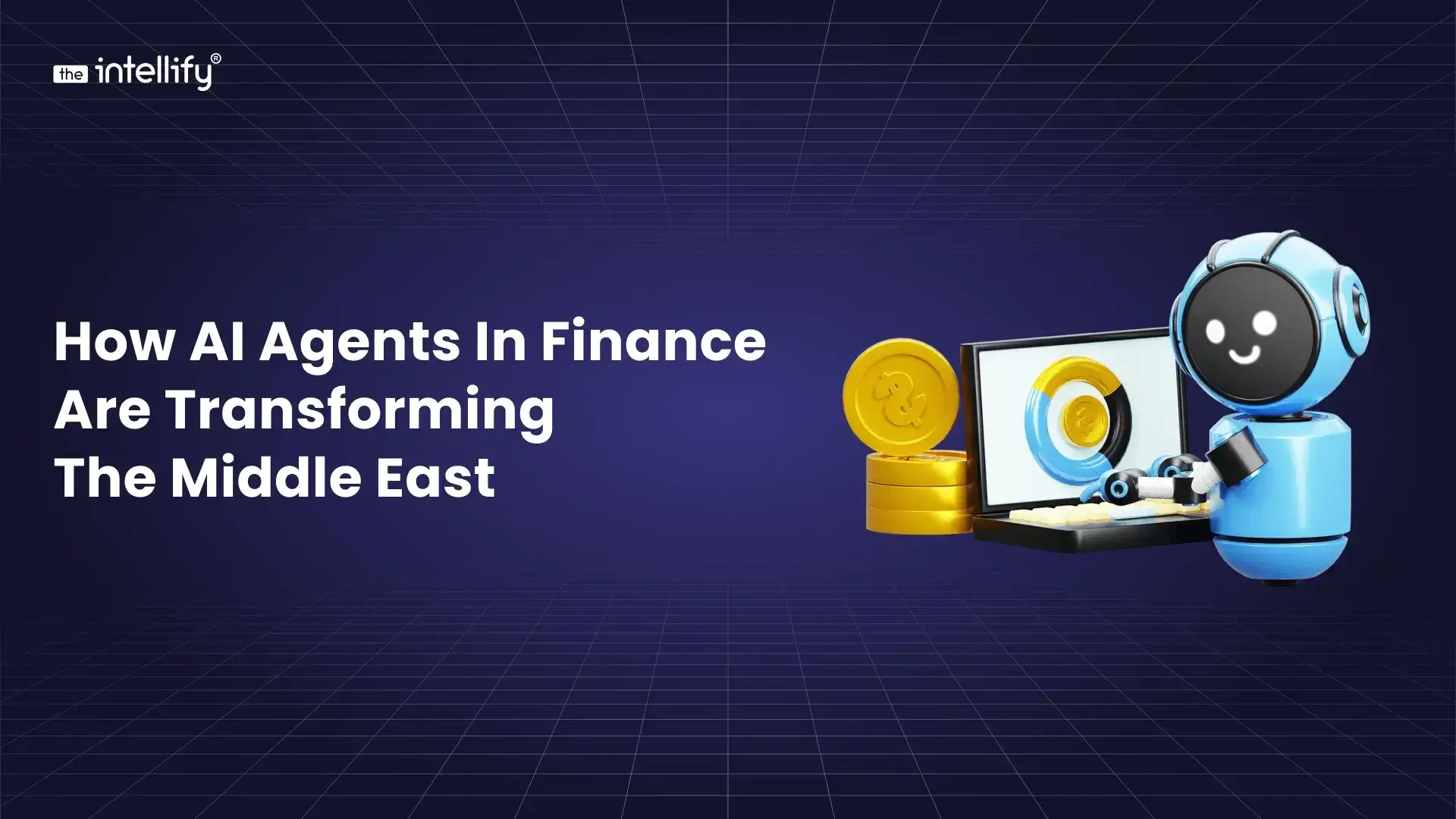

How AI Agents in Finance Are Transforming the Middle East
Summary: This Blog will explain what AI agents in finance are, their utility in the Middle Eastern market, their applications in the real world, the benefits they can bring to businesses, and how financial institutions can effectively utilize these tools. The Middle East’s finance industry is changing quickly, mostly because of new technologies and […]
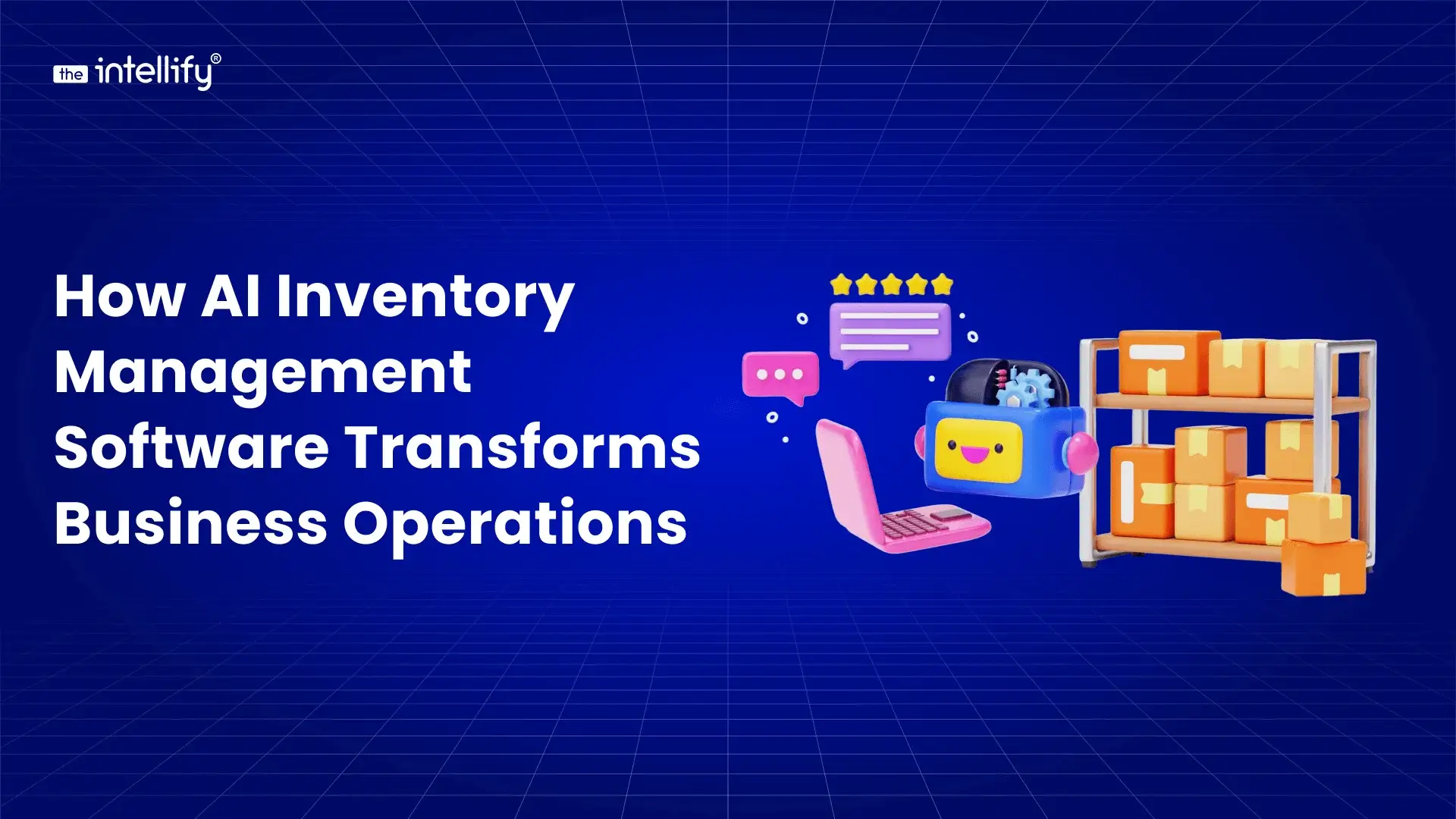

How AI Inventory Management Software Transforms Business Operations
Summary: AI inventory management software is reshaping how businesses handle stock, forecasting, and daily operations. Instead of relying on guesswork or outdated spreadsheets, AI helps companies track inventory in real time, spot trends early, and prevent stockouts or excess stock. This blog explains how AI improves accuracy, lowers costs, and boosts overall efficiency across retail, […]
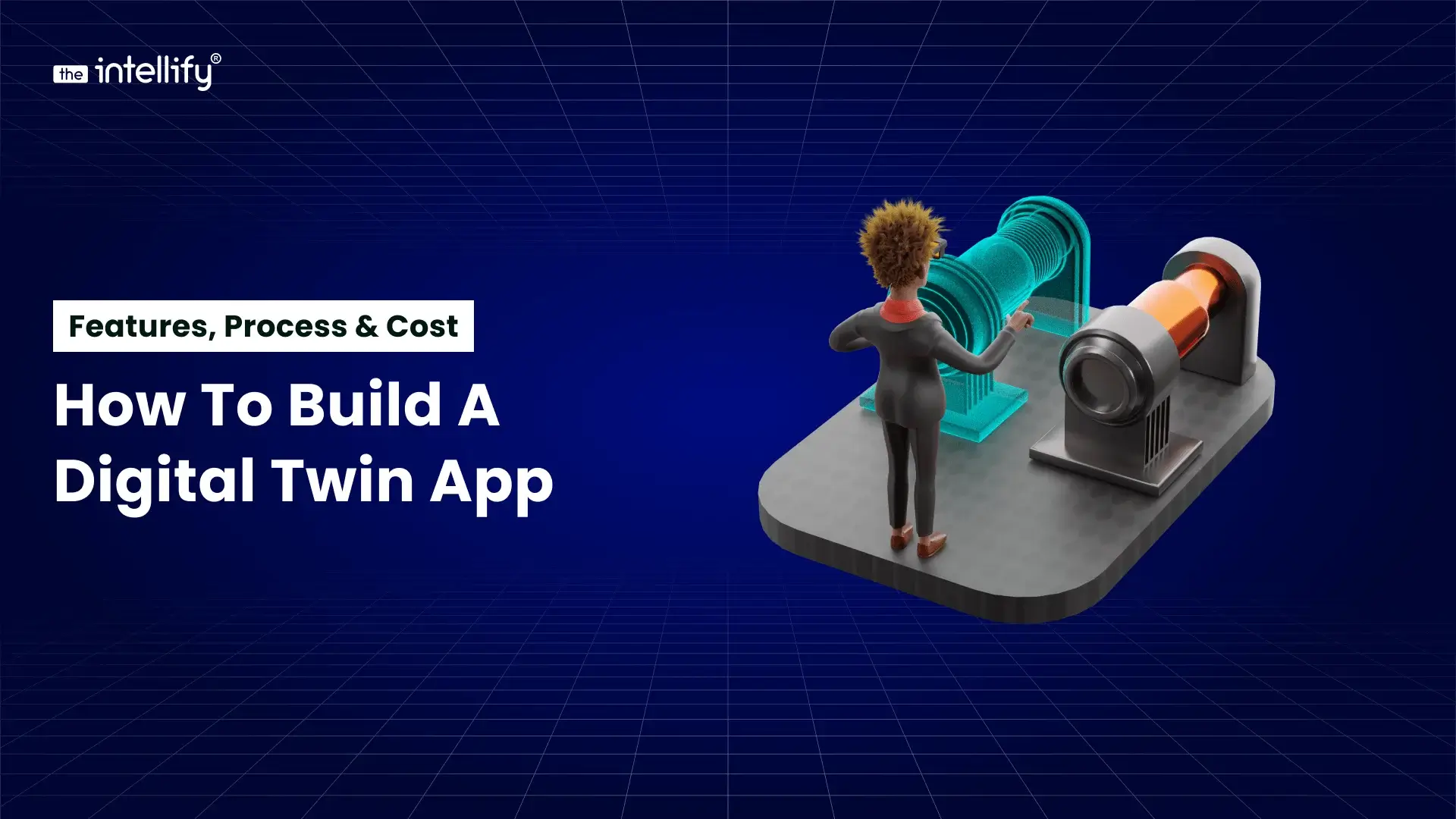

How to Build a Digital Twin App: Features, Process & Cost
Summary: A digital twin app creates a real-time virtual model of a physical asset, which helps businesses monitor performance, predict failures, and make smarter decisions. This blog explains what digital twin apps are, how they work, their key features, and the step-by-step development process. It also covers cost, timelines, challenges, and real industry use cases. […]


How to Build a Digital Twin App: Features, Process & Cost
Summary: A digital twin app creates a real-time virtual model of a physical asset, which helps businesses monitor performance, predict failures, and make smarter decisions. This blog explains what digital twin apps are, how they work, their key features, and the step-by-step development process. It also covers cost, timelines, challenges, and real industry use cases. […]


How to Build an AI-Powered Marketplace App: Development Guide
Summary: Building an AI-powered marketplace app isn’t just about coding it’s about crafting a smarter buying and selling experience. This guide breaks down everything from research and design to choosing the right tech stack, integrating AI tools, and launching successfully. Learn how personalization, chatbots, and analytics can set your marketplace apart and future-proof your business […]
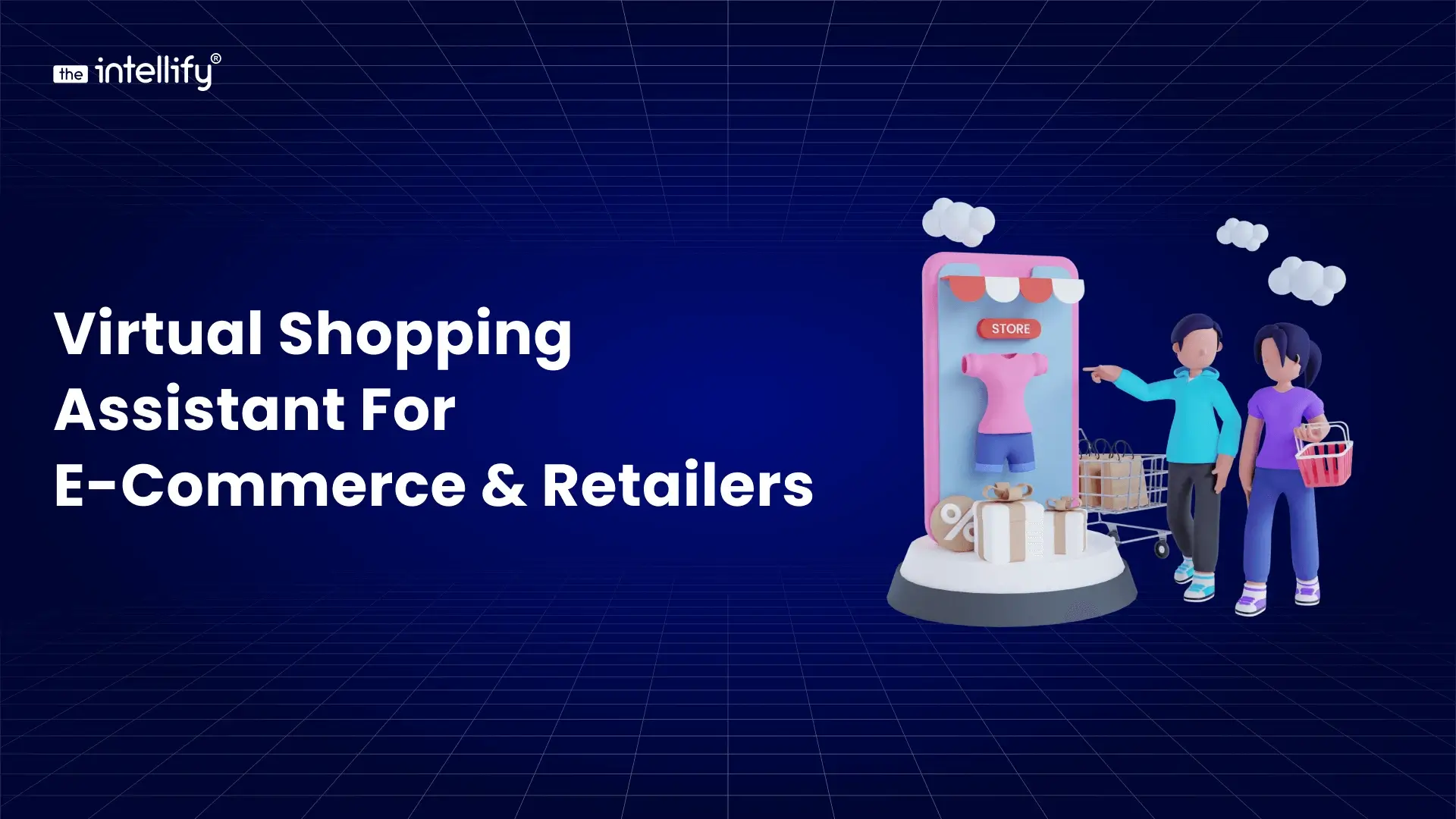

Virtual Shopping Assistant for E-commerce & Retailers
Summary: Ever wished your online store could greet shoppers like a real person would? That’s the magic of virtual shopping assistants. They chat, recommend, and even remember what customers like, turning casual visitors into confident buyers. In this blog, we’ll unpack how these AI helpers are changing e-commerce and why partnering with The Intellify might […]
0
+0
+0
+0
+Committed Delivery Leads To Client Satisfaction
Client Testimonials that keep our expert's spirits highly motivated to deliver extraordinary solutions.



















